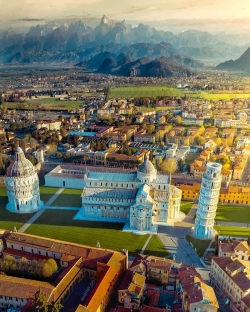ABOUT Piazza del Duomo, Milan
Piazza del Duomo ("Cathedral Square") is the main piazza (city square) of Milan, Italy. It is named after, and dominated by, the Milan Cathedral (the Duomo). The piazza marks the center of the city, both in a geographic sense and because of its importance from an artistic, cultural, and social point of view. Rectangular in shape, with an overall area of 17,000 m2 (about 183,000 sq ft), the piazza includes some of the most important buildings of Milan (and Italy in general), as well some of the most prestigious commercial activities, and it is by far the foremost tourist attraction of the city.
While the piazza was originally created in the 14th century and has been gradually developing ever since (along with the Duomo, which took about six centuries to complete), its overall plan, in its current form, is largely due to architect Giuseppe Mengoni, and dates to the second half of the 19th century. The monumental buildings that mark its sides, with the main exception of the Duomo itself and the Royal Palace, were introduced by Mengoni's design; the most notable of Mengoni's addition to the piazza is the Galleria Vittorio Emanuele II arcade.
While the piazza was originally created in the 14th century and has been gradually developing ever since (along with the Duomo, which took about six centuries to complete), its overall plan, in its current form, is largely due to architect Giuseppe Mengoni, and dates to the second half of the 19th century. The monumental buildings that mark its sides, with the main exception of the Duomo itself and the Royal Palace, were introduced by Mengoni's design; the most notable of Mengoni's addition to the piazza is the Galleria Vittorio Emanuele II arcade.



